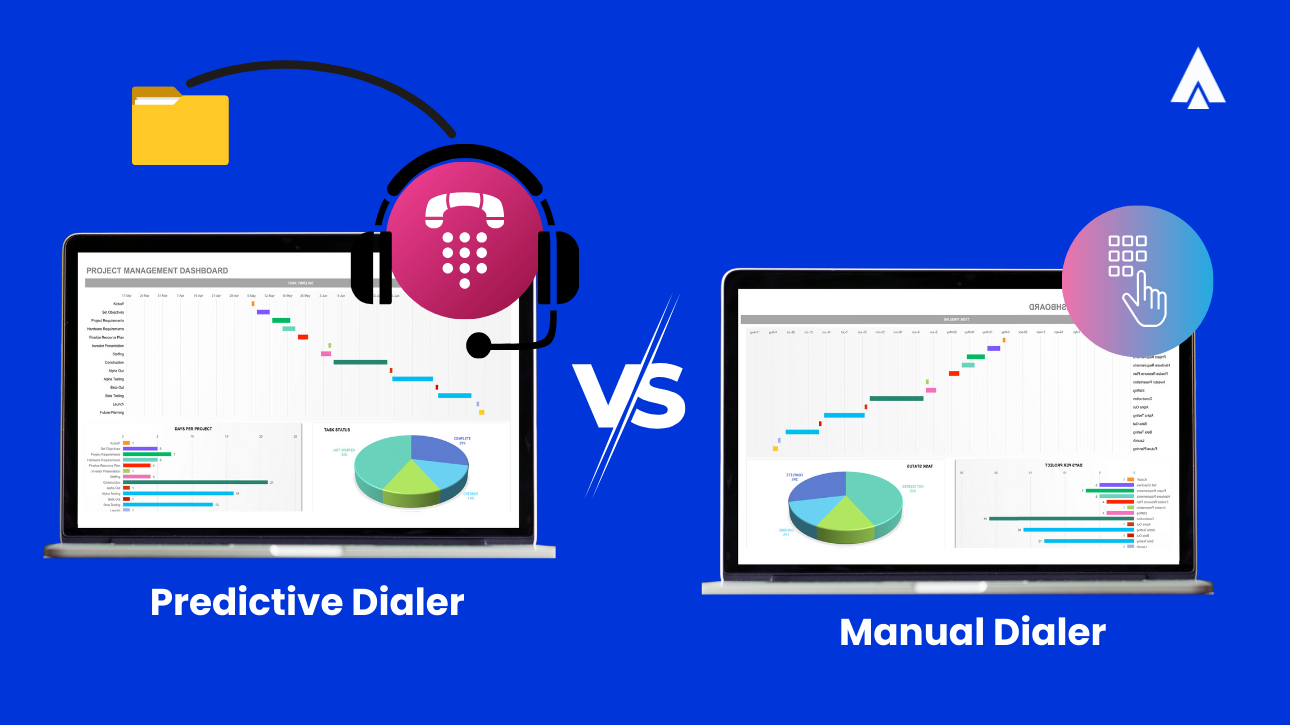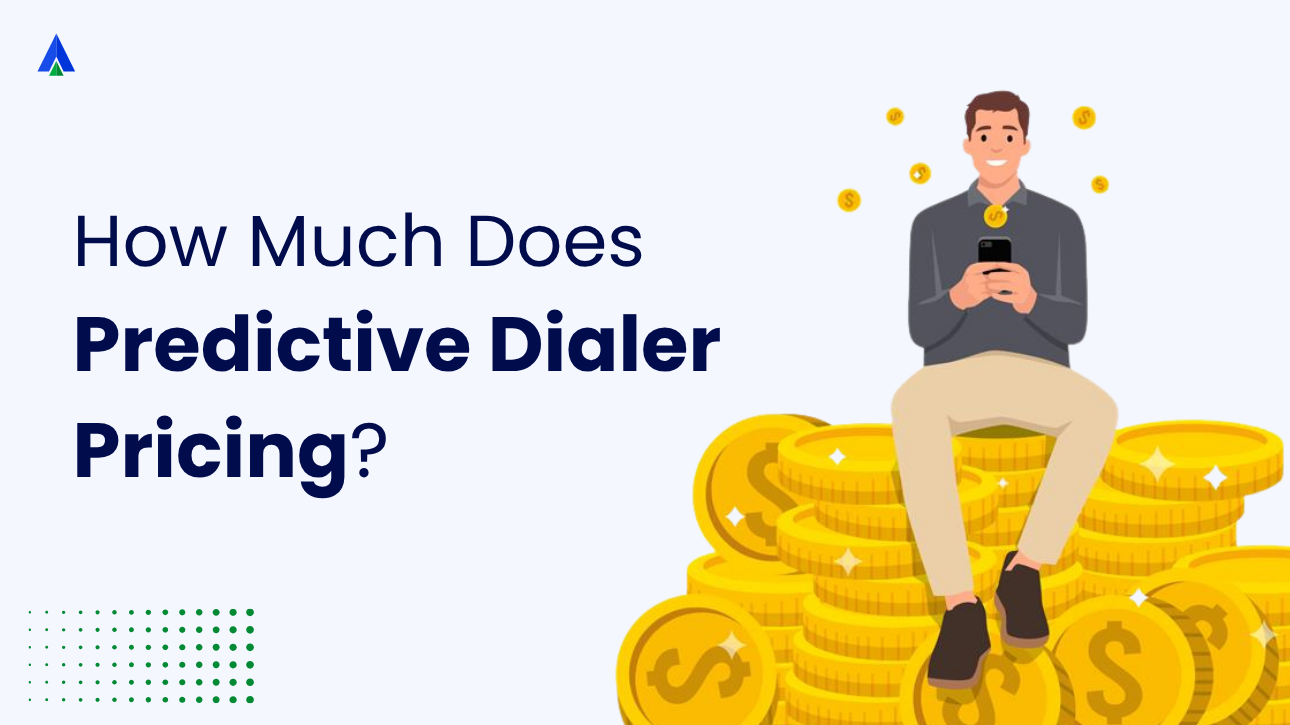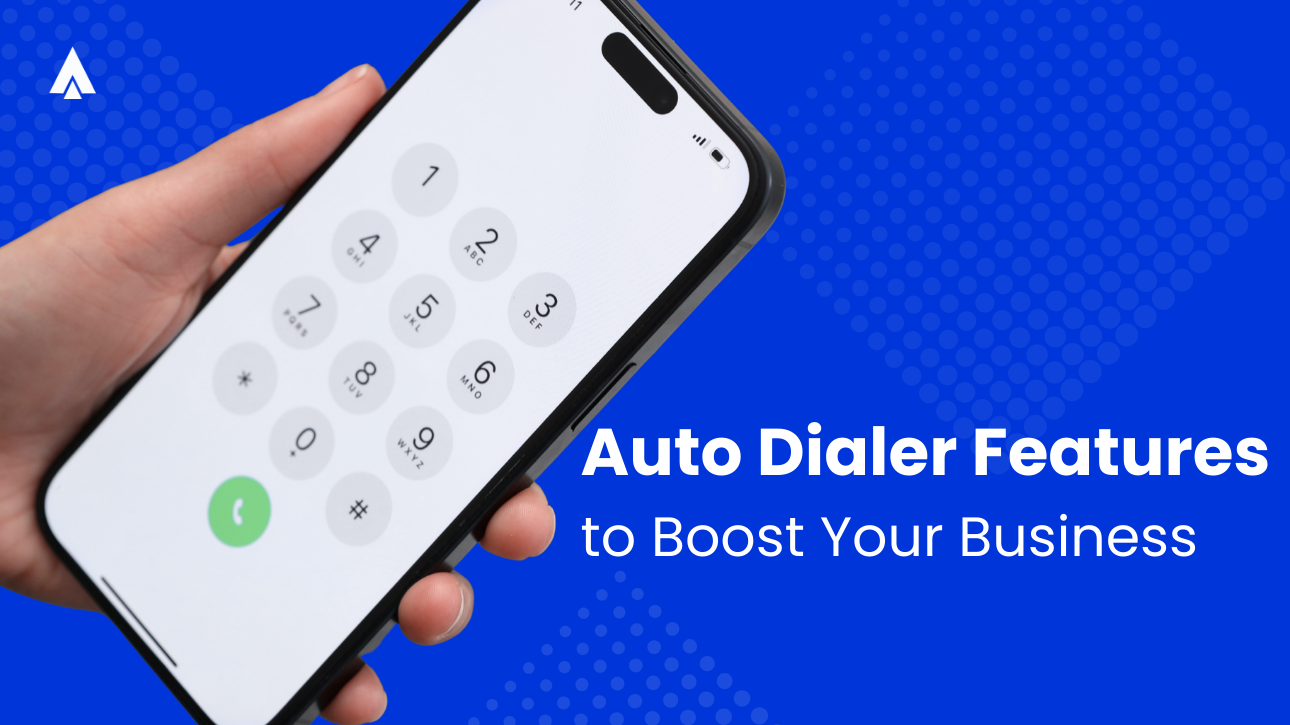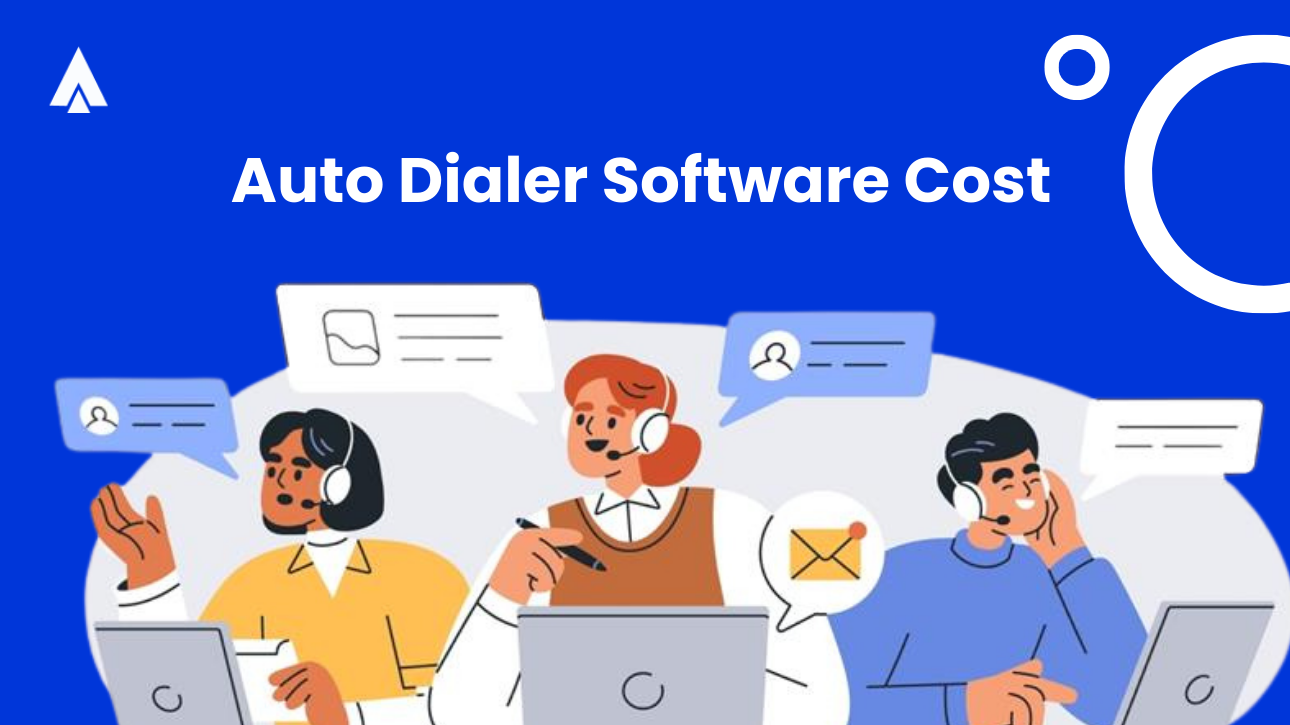In a call center environment, a dialer is one of the most important tools to access the customers and make a business conversation fruitful for both the parties. It’s crucial to recognize the difference between a manual dialer and a predictive dialer—and how an auto dialer plays a central role in efficient outbound communication. So, picking one of the many widely available call center dialers is necessary to complete the whole customer communication set up. But the most important question is, which one goes in tandem with your business. and increasingly, between predictive dialer vs auto dialer as more businesses adopt auto dialing features.
And how to decide which one is suitable for your business.
Well, the answer lies in the scale of your business and the needs of the existing customer base. The most important thing is to analyze your needs and then go for the one that is suitable.
Let’s look at the different aspects of what you should be looking for before choosing a dialer.
What is a Manual Dialer?
Manual dialer as the name suggests, the agent has to dial every number manually and speak with the customers. If the agent has some data of the particular customer, then it becomes easier for the agent to close the call on a positive note.
However, with manual dialing, the stored data, apart from merely the contact number, is less likely to be updated with manual dialing.
Traditional customer service has been banked on so far on the manual dialer but with the advent of cloud technology, a gradual shift has occurred towards the potential usage of the data. But manual dialers survived because of their easy format and voluntary dialing methods.
How Manual Dialers Works?
An agent selects a phone number, either from a contact list or by entering it manually. They then dial the number using the phone keypad and wait for the call to connect. This often includes dealing with busy signals, voicemail, or incorrect numbers, which can be frustrating. Once a call connects, the agent engages with the customer, delivers their pitch, addresses questions, and tries to close the deal.
Though simple, manual dialing is inefficient. The time spent between calls waiting for connections significantly reduces agent productivity.
What is a Predictive Dialer?
Predictive dialers use a bulk of data and churn it out for some meaningful deductions. Such dialers use a very complicated algorithm to get the data deduced. Based on the deductions, a group of contact numbers are chosen.
The important thing to know here is, these deductions are based on the demographic details and the time zones of the customers and in this way predictive dialers make customer-specific calls.
Based on the deduction, at a suitable time the dialer dials a set of numbers automatically. The automatic dialing chooses an appropriate time for the customers in a particular demography. And thus because of the appropriate timing, the customer is more likely to take the call.
How Does a Predictive Dialer Work?
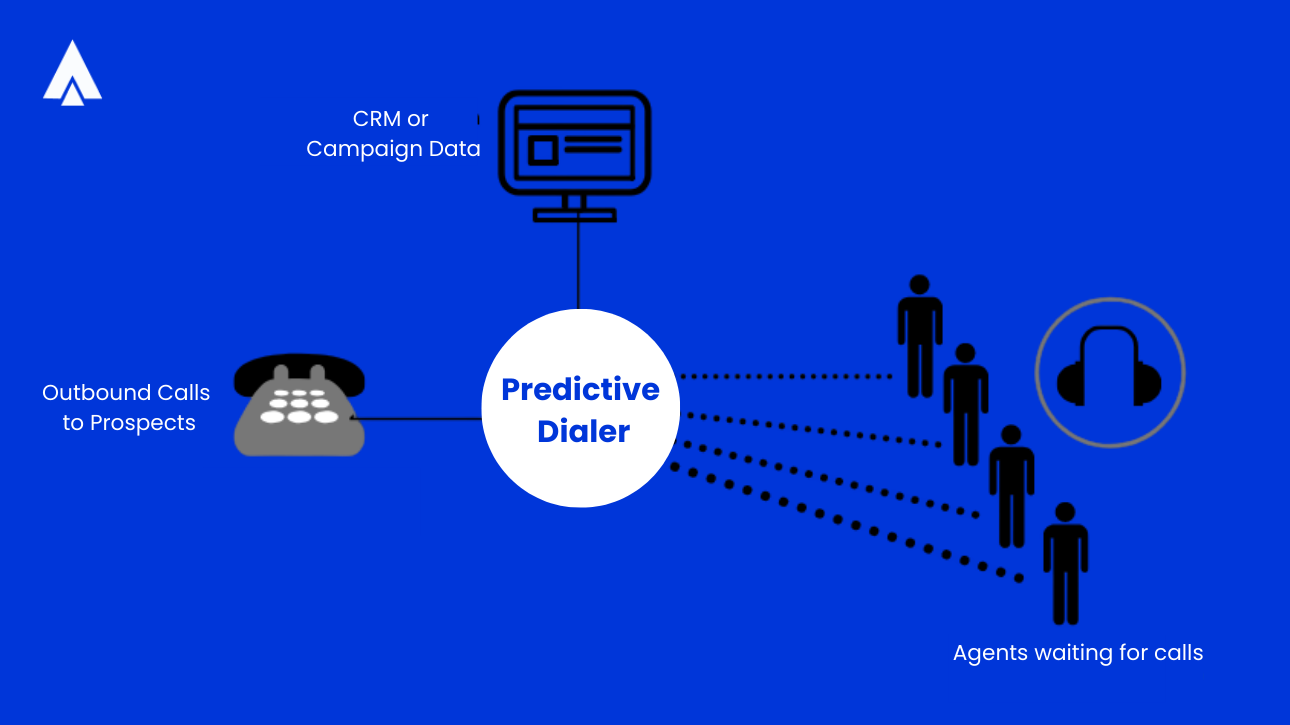
Predictive dialer software automatically calls multiple numbers at once to help agents connect with customers faster. It uses intelligent algorithms that assess factors like call duration, agent availability, and historical trends to estimate when an agent will be ready for the next call.
Only live answers are routed to agents, busy tones, voicemails, and incorrect numbers are filtered out automatically, saving valuable time. As soon as a real person answers, the system instantly connects them to an available agent, eliminating awkward pauses.
This method greatly improves efficiency by keeping agents in active conversations and reducing idle time. It acts like a behind-the-scenes engine that lets your team focus on what matters most: closing sales and handling customer issues effectively.
Predictive Dialer vs Manual Dialer: What are the Key Differences?
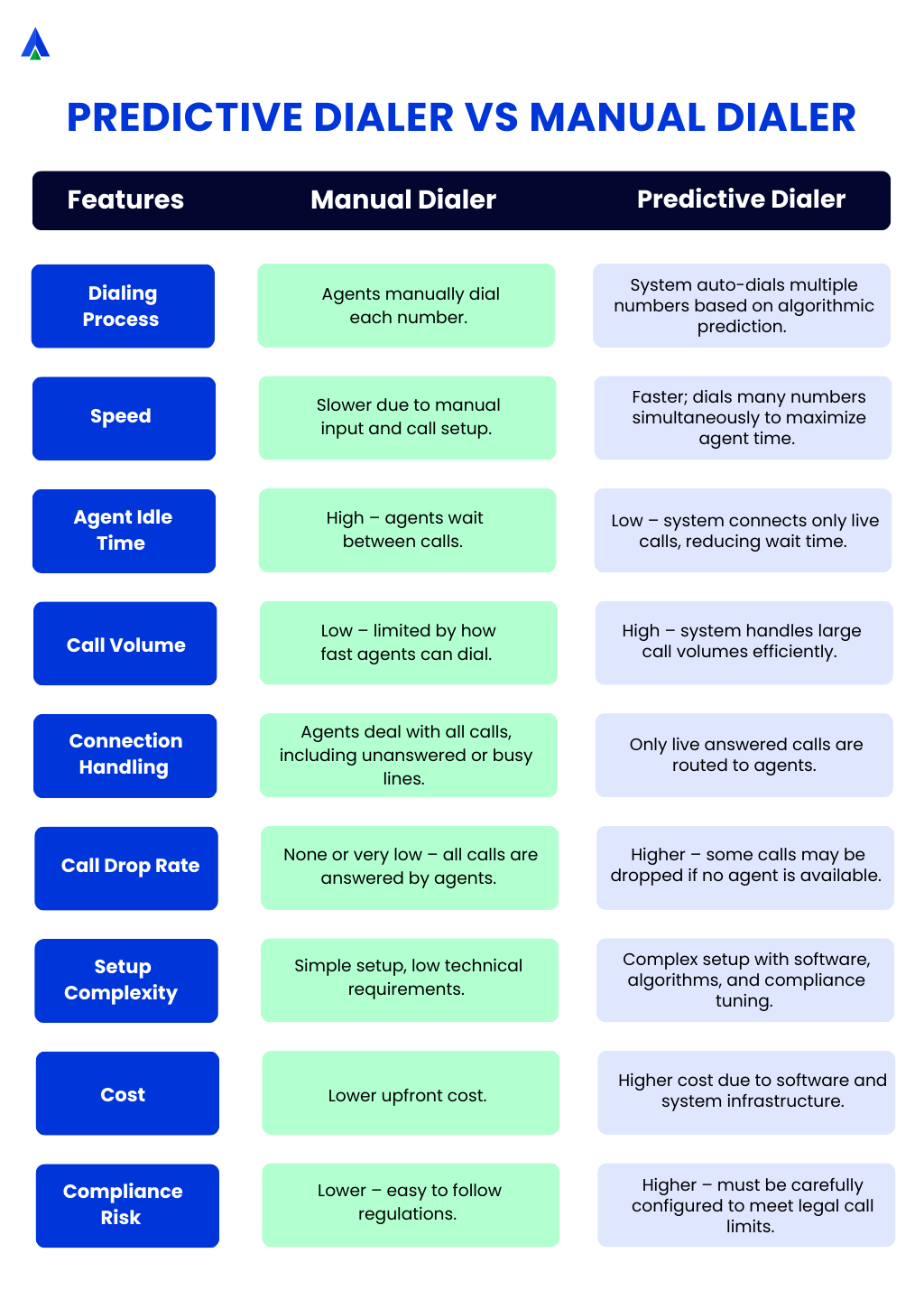
Want a deeper comparison?
Explore our detailed guide on auto dialer v/s predictive dialer to see how automation and AI impact call efficiency, compliance, and lead conversion.
Why Shift from Manual to Predictive Dialer?
Now that you understand the workings of both types of dialers in detail, let’s understand a few challenges and their solutions:
-Slow Outreach
Manual dialing limits the number of calls an agent can make due to individual dialing speed, slowing down campaigns and risking missed opportunities. Predictive dialers dial multiple numbers at once and filter out busy signals, voicemails, and wrong numbers, helping agents connect with live prospects faster and boosting sales chances.
-High Agent Idle Time
Manual dialing causes agents to spend significant time waiting between calls, dealing with busy lines, or wrong numbers, which lowers motivation and productivity. Predictive dialers automate dialing and only connect agents to live prospects, reducing downtime and keeping agents engaged in conversations.
-Increased Costs
Manual dialing requires costly hardware, software, and support, increasing overall expenses. Cloud-based predictive dialers lower infrastructure and maintenance costs, improving ROI and freeing up budget for other business needs.
-Human Error
Manual dialing risks misdialed numbers and accidental hang-ups, wasting time and missing connections. Predictive dialers automate dialing, eliminating these errors. Features like click-to-dial and CRM integration further reduce mistakes by streamlining call initiation.
-Sales Scalability
Scaling a manual dialing team means buying more hardware and licenses, which is costly and slow. Predictive dialers are easily scalable, allowing quick onboarding of new agents with minimal setup to meet changing business demands.
-Calling Accuracy
Manual dialing often results in misdials and disconnected calls, lowering lead conversions and wasting agent time. Predictive dialers use algorithms to screen out unproductive calls, ensuring agents only engage with live prospects, boosting accuracy and efficiency.
-Overall Productivity
Manual dialing wastes time on dialing and call management, reducing talk time and effectiveness. Predictive dialers automate these tasks and filter calls, allowing agents to focus on meaningful conversations.
ROI Comparison Between Predictive Dialer vs. Manual Dialer
While manual dialing may seem cost-effective at first, it often results in higher long-term operational costs. This is because agents spend valuable time dialing numbers themselves, which limits the number of leads they can engage. On the other hand, predictive dialers, though requiring an upfront investment, significantly boost agent efficiency and overall performance.
In terms of customer experience, manual dialing can lead to increased wait times, which may cause potential customers to hang up before speaking with an agent. Predictive dialers address this issue by connecting live calls to available agents quickly, creating a more seamless and responsive customer interaction.
Additionally, manual systems typically lack built-in analytics and reporting features, making it harder to track performance and implement improvements. Predictive dialers, however, offer advanced analytics tools that support continuous agent training and operational refinement, contributing further to long-term ROI.
Given these differences, it’s clear that predictive dialers offer a more efficient and effective solution compared to manual dialing.
Wrapping up
Conventional manual dialing is time-consuming, prone to mistakes, and hampers efficiency. The results are agent frustration, customer dissatisfaction, and lost business prospects.
AI-powered predictive dialer like Acefone’s solve these issues by automating the calling process, eliminating unproductive calls, and enhancing agent efficiency. They are a must-have for greater productivity.
